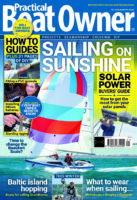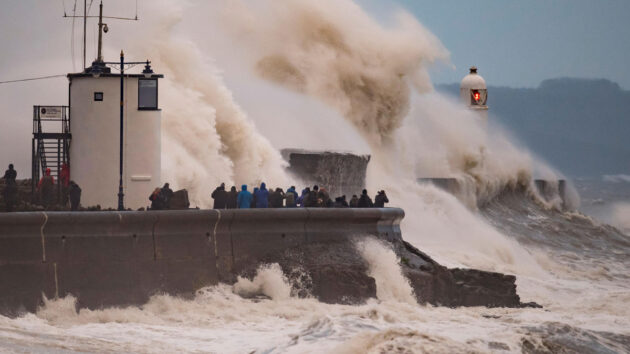The world leading weather service has been testing a prototype AI-assisted system which automatically generates a first draft of the Shipping Forecast – trials have shown it to be as accurate as Met Office meteorologists
The Met Office has released new data showing a decade of steady improvement in the UK Shipping Forecast, with wind speed and sea state accuracy up by more 10% or more.
The world-leading weather service has also unveiled a prototype AI-assisted system which automatically generates a first draft of the Shipping Forecast, which trials have shown to be as accurate as text produced by Met Office operational meteorologists.
“This innovation represents the best of both worlds,” explains Michael Sharpe, operational verification scientist at the Met Office.
“We’re combining the latest probabilistic data from the Met Office’s post-processed model with automated text generation, while preserving the human expertise that mariners depend on for critical decision-making.”
Research suggests that 30% of marine accidents are caused by poor weather conditions.
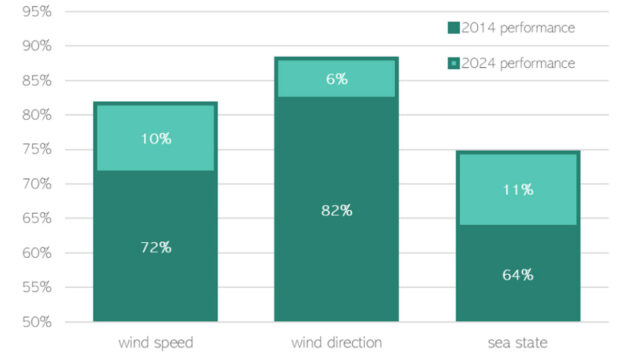
Diagram showing the Met Office’s progress made in Shipping Forecast accuracy for wind speed, wind direction, and sea state. Credit: Met Office
The new Met Office analysis shows that ‘wind speed accuracy rose from 72% to 82%, wind direction from 82% to 88%, and sea state from 64% to 75%’ between 2014 and 2024.
Forecasts continue to be more accurate in some sea areas than others, for example in the past year, the wind speed component ranged from 71% correct in Irish Sea to 89% correct in Sole. The wind direction component ranged from 84% correct in Tyne to 94% correct in Fitzroy.
Shipping Forecast: past, present, and future
Shipping Forecast accuracy has improved significantly since its inception, driven by the need to reduce the high mortality rate among mariners.
A major storm in 1859 led to the loss of hundreds of lives and prompted calls for a national warning system.
Robert FitzRoy, founder of the Met Office, responded with early forecasts delivered via telegraph and coastal signals.
Today, the Shipping Forecast is part of a global maritime safety network, with the UK responsible for METAREA I, and includes services like the Inshore Waters Forecast to support smaller vessels near the coast.
The Shipping Forecast is produced by the Met Office on behalf of the Maritime and Coastguard Agency (MCA) as part of the UK’s statutory obligations to provide Maritime Safety Information to seafarers via approved broadcasting methods. It is also shared with the BBC for its own broadcast.
The Met Office monitors the accuracy of the Shipping Forecast by comparing forecast terms with direct observations, where available, and high-resolution model analysis data reflecting past conditions.
These improvements are the result of sustained effort across multiple departments over many years.
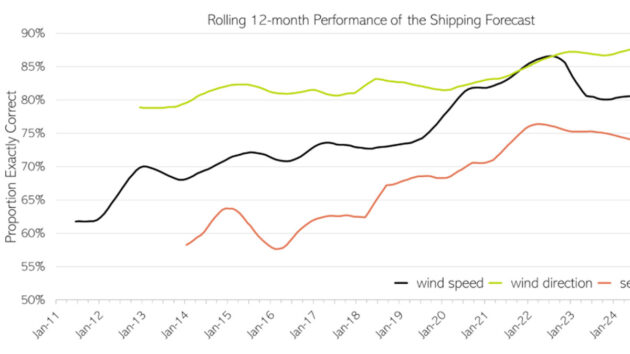
The rolling 12-month performance of the UK Shipping Forecast across three key metrics: wind direction, wind speed, and sea state. Credit: Met Office
Advances in numerical weather prediction modelling feed through to operational meteorologists, who produce increasingly accurate forecast text.
Meanwhile, the Shipping Forecast Performance verification system provides near real-time output that helps the marine forecasting bench continuously improve the Shipping Forecast accuracy by correcting any errors and refining future forecasts.
The Met Office has now developed a new automated first-draft Shipping Forecast production system.
This prototype, run in real time, produces complete Shipping Forecast text that trials have shown to be as accurate as text produced by Met Office Operational Meteorologists.
Currently, they begin writing Shipping Forecast text by adapting the previously issued forecast, which is always six hours out of date.
The first-draft system generates text directly from model data, giving the forecasters more time to add and refine details, ultimately leading to a more comprehensive and accurate final product.
Michael added: “The system represents an optimal blend of technological advancement and professional judgement, with potential for further AI enhancement to make the automated text even more closely matched to traditional Shipping Forecast style.”
Understanding weather: a quick guide for sailors
Only the foolhardy would put to sea without first checking the weather and forecast – understanding how to make use…
10 most useful sailing apps
Round the world sailor Saša Fegić shares the apps he finds the most useful on board
Shipping Forecast (broadcast) turns 100
On 1st January 2024, the broadcast of the Shipping Forecast turned 100 years old – the forecast itself is much,…
Want to read more articles like AI-assisted Shipping Forecasts?
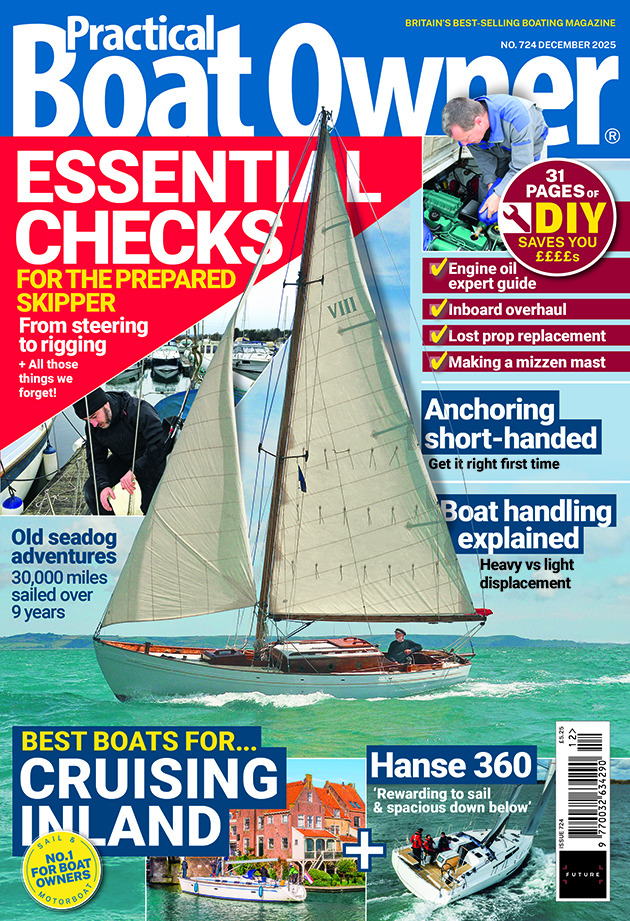
A subscription to Practical Boat Owner magazine costs around 40% less than the cover price.
Print and digital editions are available through Magazines Direct – where you can also find the latest deals.
PBO is packed with information to help you get the most from boat ownership – whether sail or power.
-
-
-
- Take your DIY skills to the next level with trusted advice on boat maintenance and repairs
- Impartial, in-depth gear reviews
- Practical cruising tips for making the most of your time afloat
-
-
Follow us on Facebook, Instagram, TikTok and Twitter

